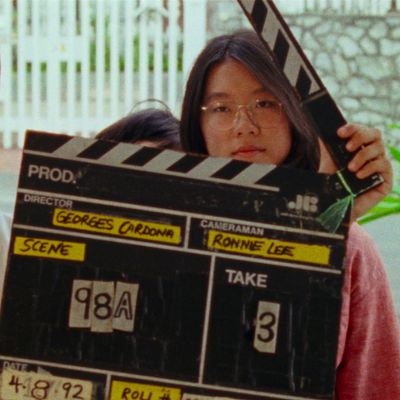
More than once in Shirkers, Sandi Tan, or those once close to her, describe her as an “asshole.” As a young, wannabe creative genius, I spent an inordinate amount of time in my young adulthood parsing the word “asshole” as an insult. To me it connoted bossiness, self-absorption, an allergy to niceties that still somehow always felt redeemable. (“Fucking assholes” are a different story, there is very little hope for a fucking asshole.) Therefore, in a way it seemed kind of daring — especially for a woman, especially for an Asian woman — to be considered an “asshole.” I often described men I was attracted to as “assholes,” while also harboring some aspiration to be an asshole myself. These were simpler times, before social media came around to offer up more than my recommended daily intake of assholery, unsolicited.
The right to be a female asshole, and the fleeting, shimmering product of the mind of such a teenage girl, is at the heart of Shirkers, a strange, engrossing, and often ravishingly beautiful auto-documentary written, directed, produced, and edited by Tan. The story of Tan’s lost titular road movie, which she wrote and starred in in the summer of 1992 when she was 19, is part thrilling meditation on youthful creativity and friendship, part vaguely sinister mystery, in which the biggest suspect is the explosive fragility of one man’s ego. Fans of the 2013 Swedish punk-girl comedy We Are the Best! will find some of that same rebellious spirit here, but for cinephiles there’s something even more endearing about young Tan’s chest-thumping insistence that she could be a big auteur name alongside Jarmusch and Herzog, and something deeply heartbreaking about how that dream was exhausted and thwarted over the years.
Tan, along with her friends Jasmine Ng and Sophia Siddique, came up in the island nation of Singpore mainlining cinema and flexing their creative muscles in the wild world of punk zines. The first third of the film is pure joy, as Tan narrates the hilarious, absurd, and rage-fueled output of her teenage years, bored and frustrated by her conservative family and country.
Tan, Ng and Siddique are perfect heroines, alienated by the world they live in, anxious to express themselves and see the world. Their creative ambition brings them to a filmmaking class taught by the enigmatic Georges Cardona, with whom the precocious Tan bonds, eager for the legitimizing force of an older man’s friendship. Eventually, when Tan writes a surrealist road movie inspired by a road trip taken with Cardona across the United States one summer, he decides to be its champion and direct it.
Because of our expectations in 2018 about what happens between an older man and a young women with cinematic aspirations, one does spend a beat or two of Shirkers waiting for an abuse plotline to rear its head. It does, but not at all in the expected form. After shooting wraps and the girls go back to school in Los Angeles, New York, and England, Cardona, who was supposed to assemble a cut, goes MIA, the footage nowhere to be found. The theft of Shirkers is not a physical violation, but it’s an intellectual one, and an emotional one that permanently damages the friendship between Tan, Ng, and Siddique. As a heartbroken Tan sets aside her screenwriting dreams and travels through adulthood, the theft becomes a wound that somehow won’t stop bleeding, even if it doesn’t necessarily hurt anymore.
The rest of the film is a kind of accidental detective story that takes Tan from L.A. to Louisiana and back home to Singapore, trying to figure out who Georges Cardona was and what would possibly motivate him to literally steal the dreams of a trio of teenage girls, and in so sadistic a fashion. Tan composes her surreal story of creativity and loss with the kind of boundless wriggliness one imagines her original film might have been imbued with. Images of young Tan in the film, bespectacled and surly and guileless, are indescribably moving. She wanders through a dreamily color-saturated Singapore, always in the same pink school-uniform top and a camera slung around her neck, shooting an endless ensemble of idiosyncratic supporting characters with a finger-gun. Shirkers is a joy, but it also feels haunted, as if Tan had the unique opportunity to unearth a perfectly preserved clone of her younger, more idealistic self.
The fact that the footage from the 1992 Shirkers plays so prominent a role in the 2018 documentary is a bit of a giveaway. But all it really gives away is the fact of the film’s existence — the images Tan and, for better or for worse, Cardona produced feel like a lost, prematurely cut-short beginning of a film movement, brimming over with life in a way that belies the passage of over two decades. Even in its most joyous moments, there’s a melancholy to Shirkers that catches in the back of one’s throat: It sends you wondering at all the wild creativity and genius of young irrepressible women lost to time, held up or buried by the domineering egos of men.

